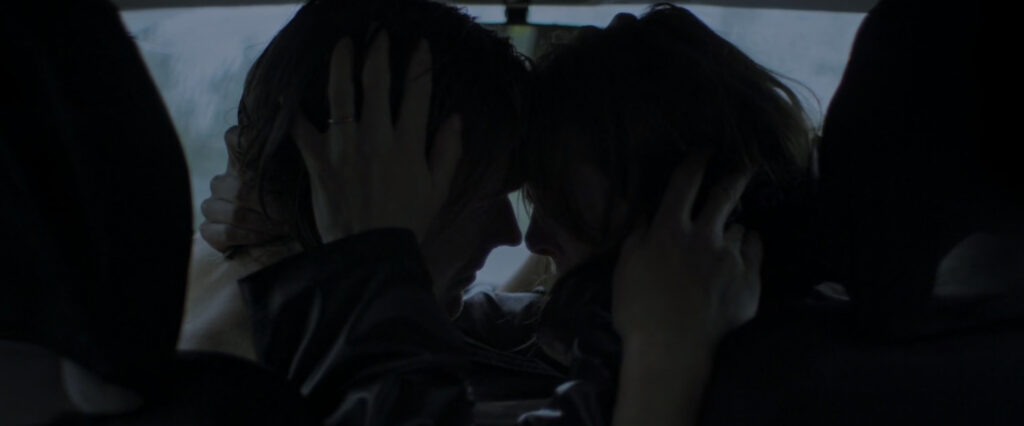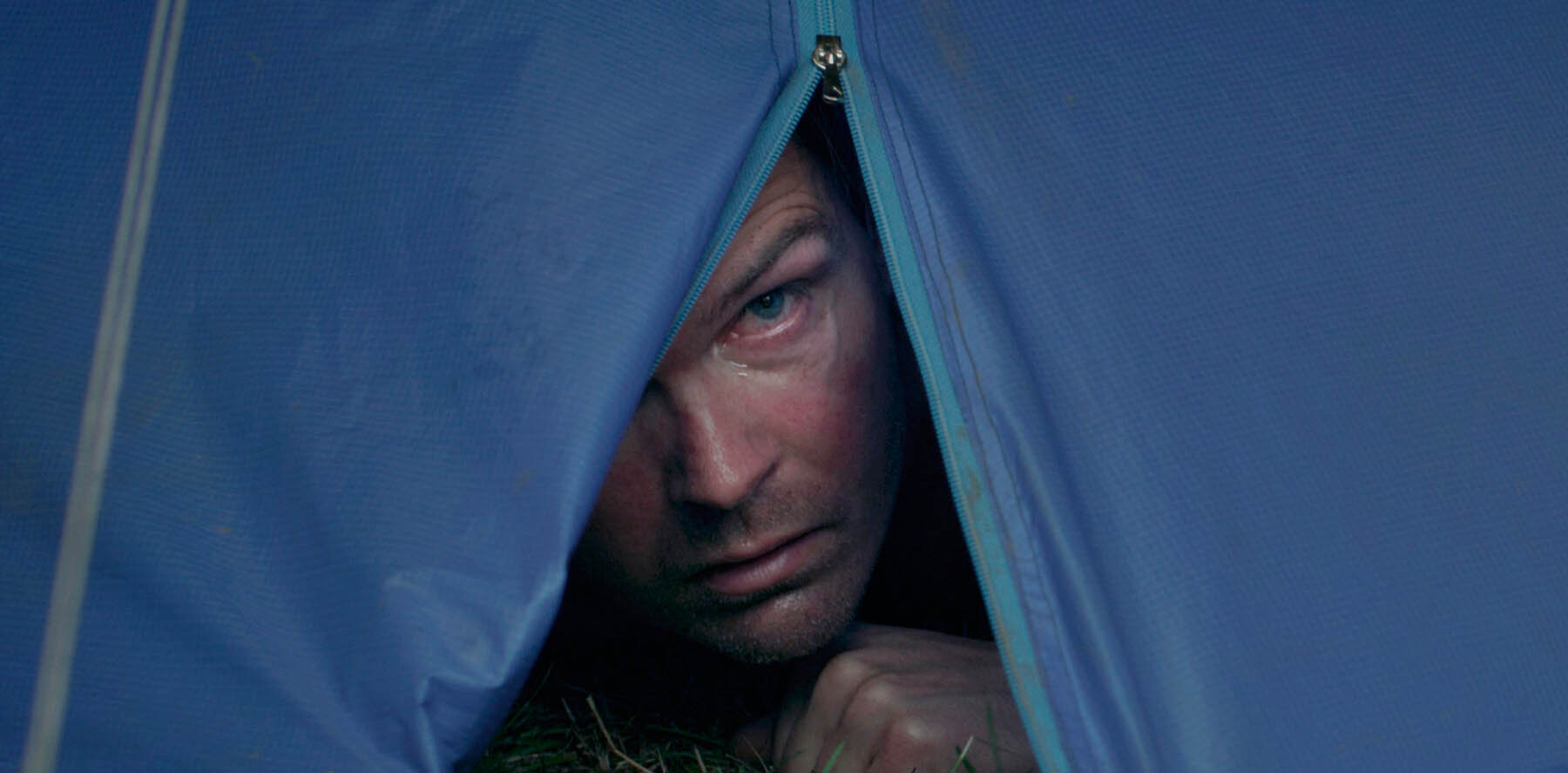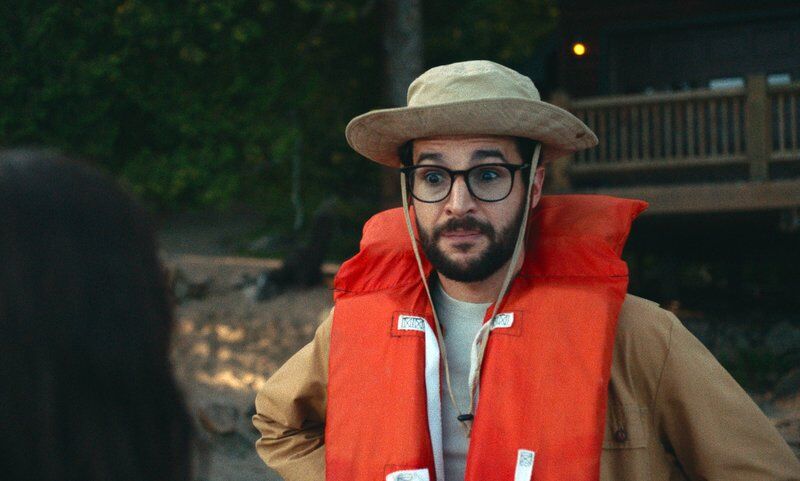Koko-di Koko-da is available to watch on the following streaming service providers:
The Mindjob Koko-di Koko-da Explained. Today’s movie, Koko-di Koko-da comes to us by way of a recommendation from Patreon member Nancy. Thanks Nancy for the recommendation!! This movie falls right in the sweet spot of where THiNC. lives and breathes. Low budget, indie film, with a clever twist or two that I’m not going to reveal, and a powerful emotional punch that sits at the heart of said punch…
Alright – let’s talk about Koko-di Koko-da, because you have all clicked one of the links above and watched it, right? Great.
Koko-di Koko-da Movie Walkthrough
The movie opens with Tobias and Elin on a lovely holiday. They have their daughter with them, and they are laughingly enjoying the time away. Great food. Lovely, touristy restaurant, birthday celebrations, all is lovely and exciting as the movie opens. Tomorrow is their daughter Maja’s birthday, and she is carrying around with her, her birthday present. She already knows what it is, but she can’t open it until tomorrow. The present? A happy music box filld with koko-di’s and koko-da’s. A music box that is about to set the stage for the entire movie.
While eating at this lovely vacation restaurant in Skagen Denmark, Elin has an allergic reaction to the food. (Apparently she had mussel pizza?? Which, I would think, would make ANYONE deathly ill. Wouldn’t it? What a horrific idea.) She balloons up, face going bright red, she begins throwing up in the bathroom. Her daughter and husband are really worried about her, and soon she is airlifted out of the resort town, and headed off to the nearest hospital. The next day though, after getting fluids and treatment, Elin turns the corner and is much, much better. When the couple go to rouse their daughter – it is her birthday after all – they find that she is dead.
Okay… so let’s just pause there for a second.
That occurrence, on the face of it, is horrific. Parents should never have to bury their children. (The fact that in ages past, parents waited months to name children simply because child mortality was so high is a different topic entirely.) This couple, on holiday, are crushed by a terrible, just unfortunate circumstance. I think of Alec Baldwin, who accidentally shot and killed someone on set this weekend. Horrifying. Terrifying accident. I think of a story that happened a few years ago… a family, in their car was driving, and a bridge beam fell, decapitated the entire family. They probably didn’t even see it coming. Just a magnificent tragedy. The stuff of Shakespeare and poets write about. Just sad beyond belief. Anyway, back to Tobias and Elin. Dead daughter, on her birthday… awful. Got it.
JUMP FORWAR THREE YEARS
We join the couple on another holiday – maybe their first since the tragic events of their daughter’s death. Nothing is right. The two bicker, and fuss at each other. Tobias has gotten the wrong ice cream. “This isn’t what I wanted.” She is literally talking about the ice cream in her hand… but it’s clear this is a metaphor for the rest of it. I didn’t want the ice cream, and I also didn’t want my daughter to die, and I didn’t want to go on this stupid vacation, and ALL OF IT. Got it. (I gotta say, sound design. Gah. It’s obvious the production crew just sat in the backseat and just filmed the couple driving – and recorded the audio straight off the mic in the car, and shipped it. Yes, I’m a fan of indie films where budgets are small, the staff are few… but I could have made that audio better and I suck at sound work. My mac, GarageBand and a couple of free filters would have done the trick. But that might have just been me.) REGARDLESS, they aren’t doing well.
At the start of their camping trip – Elin has to go to the bathroom, and is confronted by ice cream suit guy at the opening of the film. You know, the Koko-di Koko-da guy at the intro. And two others as well… and as they accost her, ice cream guy hits her with a stick all the while yelling at her. These three characters are some sort of dark manifestation of this nursery rhyme idea… probably connected back to the music box – at least, that was my assumption from the outset. (Wasn’t too difficult to make that “logical leap”, they were in the opening of the movie, singing this nonsensical koko-di business. Elin is attacked by the trio, and all the while Tobias stays in the tent, refusing to come out. He’s frantically looking for a way to defend himself. Eventually the trio sick their dog on him… collapse the tent, and he eventually comes out bloodied from the encounter.
And then, just like that??? The scene starts over again. Wait, what? Yeah, Elin and Tobias are heading to the camp ground. You, my friendly audience, get the joy of watching this scene unfurl all over again. Congratulations.
This time (or the next, I literally lost track) Elin is stabbed to death as Tobias watches. Then, as Tobias tries to flee in his car, he gets stuck after driving over the dog and hitting Sampo. But Sampo bests Tobias and beats him to death with a tree branch. The next time, Tobias wakes with a start, and tells them that they have to run for their lives. It was only a dream! Nope, they are bugging out. They drive away as quickly as they can. But eventually, Elin needs to go to the bathroom… and it is then that the trio strike. These night terrors are really determined. No matter how Tobias and Elin play these encounters, their endings are predetermined. They will be beaten, they will be murdered, usually individually… one, then the other. And the timeline will start again.
Eventually Elin makes it out to a chapel, where she watches a shadow box story… a story about grief, a story about loss… a thinly veiled reference to her own story of loss and her daughter’s death.
Soon after, she wakes to another turn at the insanity. But this time, Tobias is a man on a mission. They are leaving, and they are leaving right now. He chucks Elin into the car, and they don’t look back. They drive, and they drive, and they drive. Eventually though – after Elin has wet herself… not wanting to make the same mistake as last time – they hit a dog in the road, and their car crashes into a bog. The two look at each other, in what seems to be the first time since the death of their daughter, and they cry, and hold each other.
The Ending of Koko-di Koko-da Explained
What did I just watch? No seriously. I’m not being rhetorical. I’m not acting like I know – and you don’t. I’m not using some sort of theatrical device here. I’m literally saying… “WHAT THE HECK DID I JUST WATCH?!?” And yet, I also get it innately, simultaneously. It’s funny that. Hrm…
But the first question is that ending. What happened there? It’s not a foregone conclusion either way. I’m seriously asking you what you thought. There are literally two options to understanding what the movie was about, and specifically that ending as well:

Option 1: It’s a Happy Ending
If you are generally an optimistic person – you are going to go with option 1. Basically, there is no happiness in this movie at all. None. But maybe, just maybe, we can eek out a glimmer of happiness from the last thirty seconds? But how is any sort of happiness possible in this horrific movie?
Koko-di Koko-da the Happy Ending is only possible from one vantage point. And it works a bit like this… Koko-di Koko-da is just a view of the terribleness that is grief. Parental grief specifically. And the downward spiral that can just consume those who have lost a child. Nothing is right anymore. Nothing works. Mentally, even ice cream is horrible. Worse, their grief caused Elin and Tobias to become enemies. They lived lives that concentrated on survival – and abandoned each other. Notice how Tobias was out for his own survival, and he’d stopped worrying about his wife’s survival. Time and again the guy watches as his wife dies. Does nothing. It’s terrible. One went <—– that way, the other went —–> that way. They are not on the same page anymore.
But at the end there is a change. They are running away from the chaos and pain that they have been suffering through in a cycle, over and over again… and they crash into a dog, and find themselves up to their hips in water. It seems hopeless. But in that moment, Elin and Tobias, they see each other. They realize that they are in this together. They discover that they are going through this together. And, from this perspective, the happy ending perspective, they have finally broken through the first key hurdle of grief, which is, that we are in it alone. They realized that they are not alone in this. They realized that that are in this together, and that they can support each other through this hell on earth.
Thus the happy ending. The Koko-di Trio may or may not walk out of the woods in 2 seconds… walk through the bog, and murder them horribly. But it really doesn’t matter. Why? Because the couple have made their first step towards reconciling, towards healing. Yes, they have a long way to go, but they have started their way out of this cyclical hell, even if they are still stuck in it. But option 1 assumes that the death trio are NOT walking out of the woods again. That the couple have finally broken free. But it was due to their emotional break through that they were able make together.
Option 2: It’s a Horrible Ending
If you are a realist (or a horrible person – don’t worry, I’m a realistic horrible person… you are in good company) and you believe, like Hobbes, that life is nasty, brutish, and short, this is your theory for understanding this movie. As I mentioned above, this movie is totally about grief. But where this option 2 pivots away from where option 1 went, it is that it doesn’t posit that as they sit in that bog, they are about to get hunted down, and murdered, again. Congratulations, you guys shared a hug. So what?
Similar to Dante’s Inferno – this couple is trapped in the lower realms of hell. They are swirling, and completely lost. There is no way out, and they are trapped by the demons that are manifested in the worst aspects of the their child’s life… the birthday gift. They will never make it out, and this trio will chase them until they are completely done. Or forever. It’s over.
My Personal Opinion on Koko-di Koko-da
The movie – 80% of it anyway – is all about the lurid humiliation of these two parents. Over. And over. And over again. The movie just relentlessly feeds these two people into the tree shredder of grief without end. It’s so hardcore, that the movie is absurd. It’s actually probably classifiable as an absurdist movie… maybe not. But maybe… seems right to call this flick absurdist, even if it doesn’t meet the literal definition. The root though of this movie is grief. Grief and the self torture of what I might have been able to do differently, but didn’t. You know? The repetitive nature of it is the personal hell that those who are grieving do to themselves. (Which, is totally understandable really… and yet, still horrible in its intensity.)
Do you remember the first iteration of this movie when the witch character… the girl… she is pointing the gun at Tobias, and she is definitively pointing it at his crotch right? And the Ice Cream man, he even points it out. It was in that moment that I realized, that for Tobias anyway, the terror of these reoccurring nightmares was in the fact that he probably thought he should have never had a child in the first place. It was punitive in a very real and literal procreative place. The pain he felt was in a reproductive sense. You know? Punitive, Penal,…. Penis-oriented. hahah. You know what I mean though, he can’t imagine having another child. He can’t imagine having had that one… the one he lost. The one he loved, still loves! You know?
This movie reminds me of the absurdist movie, the Music of Chance… where a couple of guys are told to build a random wall the entire movie. Not a wall with any purpose… nothing as sane as all that. Just a wall that will be torn down later. Etc etc. Similarly, Koko-di is just random repetition to drive home an EMOTIONAL point. For those who haven’t lost a child, it is impossible to know what they are going through. But in the senselessness of Koko-di Koko-da we learn what it might mean, what it might be like. At least, in some small part. We learn about the senselessness of it. We learn about the rape-like qualities of it all, the senseless humiliation of it, and unrelenting nature of it. It is useful in that it tells a story that is otherwise utterly unknowable. Right?
The issue I have though with the film is that in attempting to help us relate to these grieving parents, they have ultimately belittled them into mere grotesqueries. And that is where the film failed for me. Yes, I get the point you are making here – but the utter illogic of it? The complete and total fantasy of it all? It just diminished the entire project. It makes no sense in that we cannot relate to seeing these parents flee from insanities, even in their own mind. I believe in the IDEA of the project. But I can’t get behind even the merest sliver of its execution (pun unintentionally intentional).



